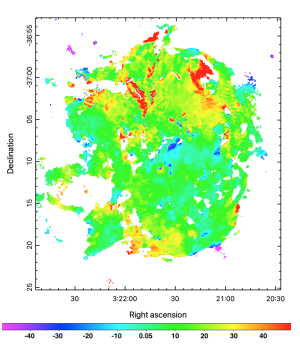2024-10-17 マサチューセッツ工科大学(MIT)
<関連情報>
- https://news.mit.edu/2024/astronomers-detect-ancient-lonely-quasars-murky-origins-1017
- https://iopscience.iop.org/article/10.3847/1538-4357/ad778b
アイガー VI. z ≳ 6における高輝度クェーサーの相関関数、ハロー質量、デューティサイクル EIGER. VI. The Correlation Function, Host Halo Mass, and Duty Cycle of Luminous Quasars at z ≳ 6
Anna-Christina Eilers, Ruari Mackenzie, Elia Pizzati, Jorryt Matthee, Joseph F. Hennawi, Haowen Zhang, Rongmon Bordoloi, Daichi Kashino, Simon J. Lilly, Rohan P. Naidu
The Astrophysical Journal Published: 2024 October 17
DOI:10.3847/1538-4357/ad778b

Abstract
We expect luminous (M1450 ≲ −26.5) high-redshift quasars to trace the highest-density peaks in the early Universe. Here, we present observations of four z ≳ 6 quasar fields using JWST/NIRCam in the imaging and wide-field slitless spectroscopy mode and report a wide range in the number of detected [O iii]-emitting galaxies in the quasars’ environments, ranging between a density enhancement of δ ≈ 65 within a 2 cMpc radius—one of the largest protoclusters during the Epoch of Reionization discovered to date—to a density contrast consistent with zero, indicating the presence of a UV-luminous quasar in a region comparable to the average density of the Universe. By measuring the two-point cross-correlation function of quasars and their surrounding galaxies, as well as the galaxy autocorrelation function, we infer a correlation length of quasars at 〈z〉 = 6.25 of rQQ0=22.0+3.0−2.9cMpch−1, while we obtain a correlation length of the [O iii]-emitting galaxies of rGG0=4.1±0.3cMpch−1. By comparing the correlation functions to dark-matter-only simulations we estimate the minimum mass of the quasars’ host dark matter halos to be log10(Mhalo,min/M⊙)=12.43+0.13 −0.15(and log10(M[OIII]halo,min/M⊙)=10.56+0.05−0.03 for the [O iii] emitters), indicating that (a) luminous quasars do not necessarily reside within the most overdense regions in the early Universe, and that (b) the UV-luminous duty cycle of quasar activity at these redshifts is fduty ≪ 1. Such short quasar activity timescales challenge our understanding of early supermassive black hole growth and provide evidence for highly dust-obscured growth phases or episodic, radiatively inefficient accretion rates.



